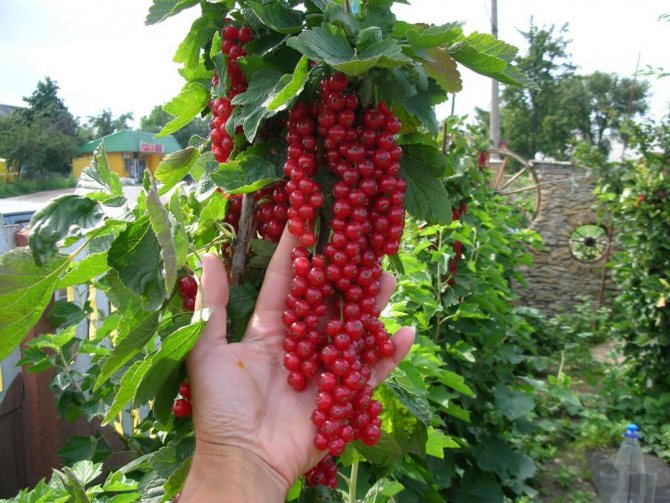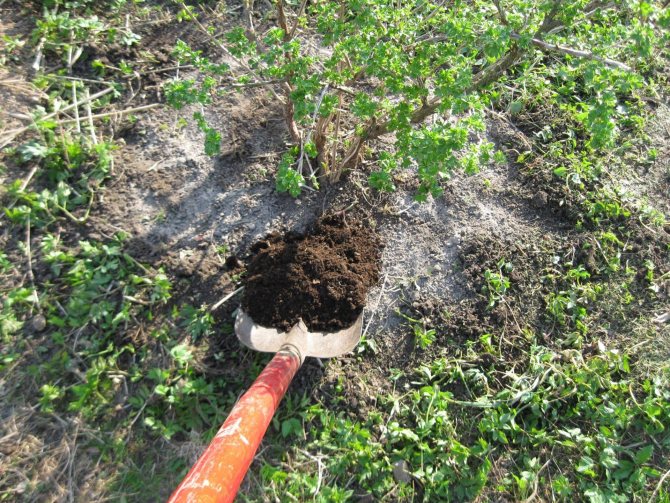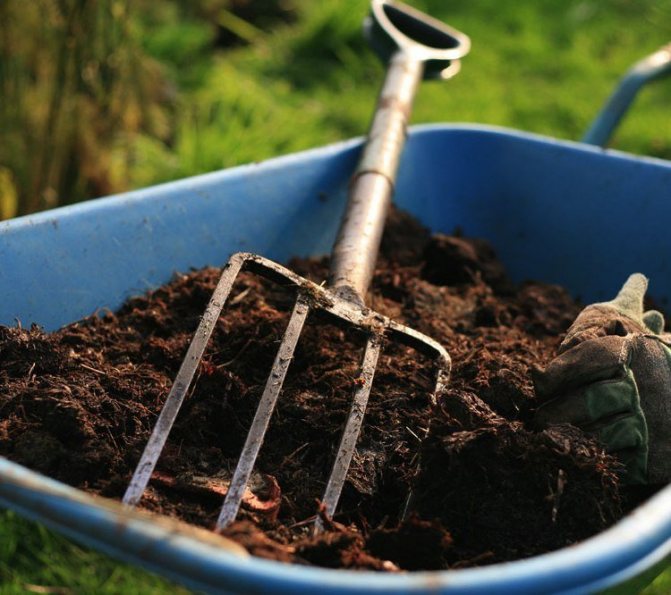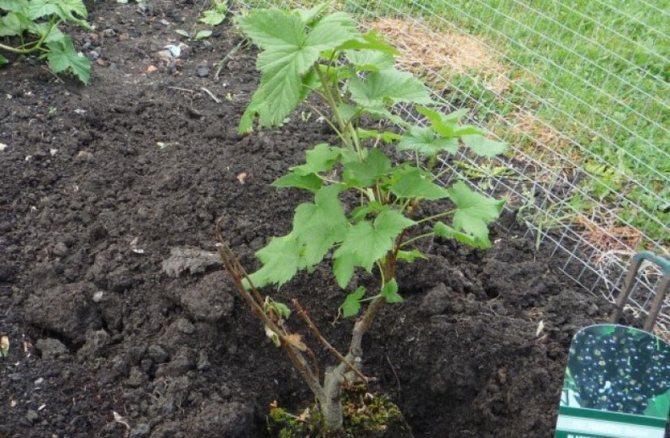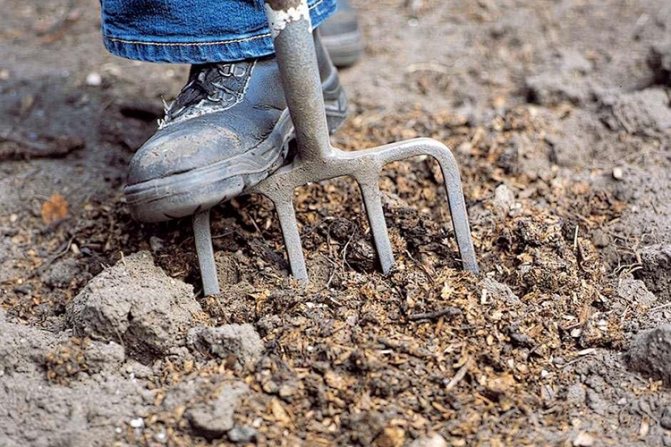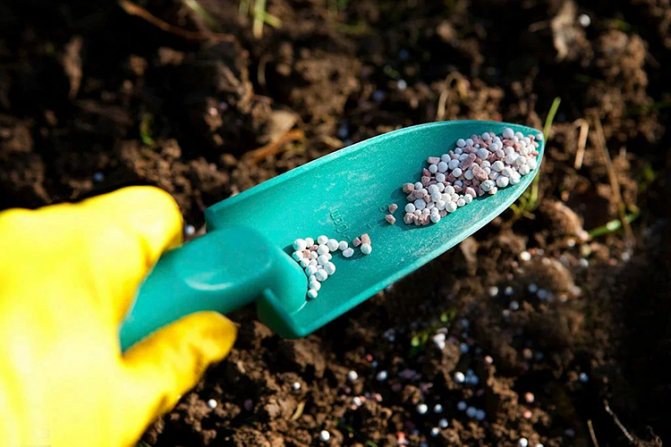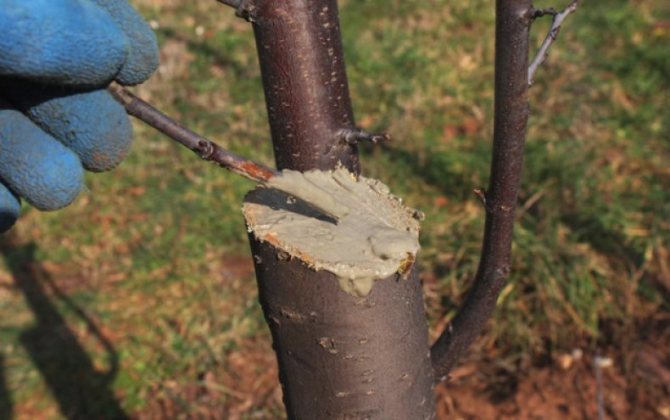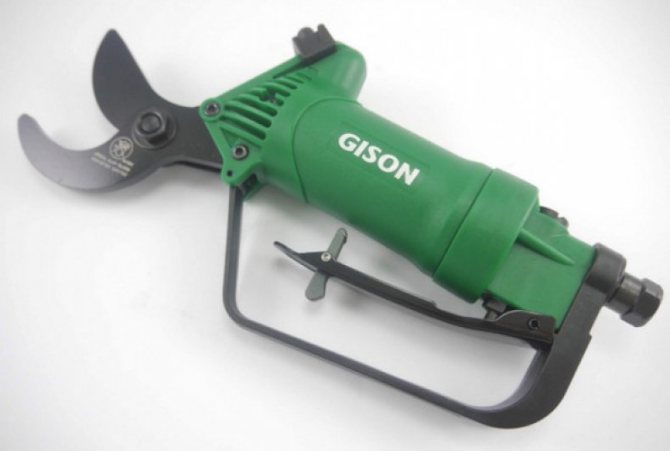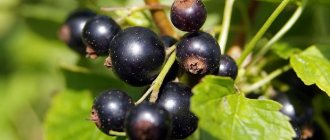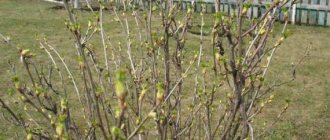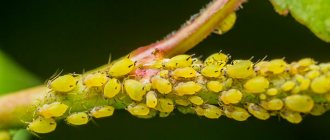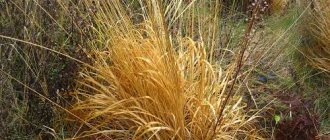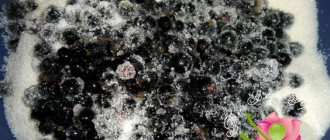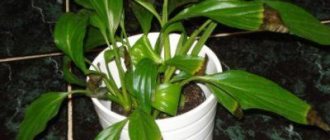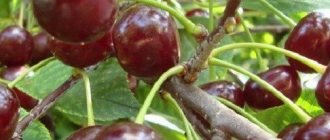Category: Growing and Care Reading: 8 min Views: 484
Fertilization is the key to a high-quality and plentiful harvest in the garden. Plants begin to actively develop, bear fruit and stop hurting. Currant bushes respond well to feeding with organic matter and mineral fertilizers. Top dressing of currants in autumn and spring is carried out 4 times, from the beginning of the awakening of the branches to the preparation of the bushes for wintering. What is the best way to fertilize currants, and how to properly care for it? Let's consider these questions in the article.

The need for feeding currants
Plants constantly need micronutrients that are pulled from the soil. The soil is depleted over time, so it is necessary to apply mineral and organic fertilizers.
Fertilization scheme:
- with the beginning of the awakening of the leaves;
- with the beginning of flowering bushes;
- the beginning of the ovary of berries;
- after picking berries;
- preparation of bushes for wintering.
The bushes are fertilized by two methods - spraying and watering. When spraying, trace elements are immediately absorbed by the leaves, so they receive the necessary nutrition faster. When watering, nutrients penetrate into the root system through suction from the soil. In this case, the plant receives nutrition after some time, not immediately.
In order for currant feeding to be effective, it is necessary to alternate root feeding through watering with foliar feeding through spraying.
For spraying, a weak concentration of the solution is prepared, reduced by three times. If you spray the bushes with a highly concentrated solution, you can burn the leaves.
Fertilizing currants in the spring can begin with dry fertilizers, since the soil is still sufficiently moist. When planting new bushes, you can put the granules in the planting holes. In the summer, you can spray the plant with a spray bottle; in the fall, it is best to use liquid fertilizers.
It is also important to water the bushes on time, especially during flowering and berry ovary. Only in this case it is necessary not to fall on the leaves and stems: otherwise powdery mildew may appear.
How often are currants watered? Enough once every 7 days. Irrigation should be abundant - about 50 liters under one bush. To preserve moisture, the bushes are mulched. To do this, you can simply use weeded weeds - spread them around the currants.
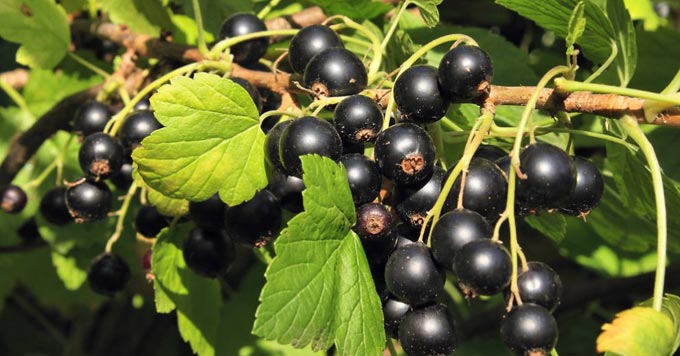

The value of autumn nutrition
In autumn, after active fruiting, currants are very vulnerable. The roots of the plant are shallow underground, so the amount of available trace elements quickly ends. She needs to accumulate strength for the winter in order to have immunity to diseases and pests in the spring, and go into active growth.
When feeding, it is important to take into account the biorhythms of the shrub and its autumn needs.
Biorhythms of berry bushes in autumn
After the harvest, the currant bush gives all its strength and juices to the formation of young fruit buds. Thus, the plant takes care of future fruiting. During this period, depletion can lead to the absence of berries for the next year and even to the death of the entire shrub.
The more nutrients the currant accumulates by the winter period, the more favorable it will be.
Autumn currant needs
When caring for currants in the autumn, potash and phosphorus fertilizers are used.Such minerals, getting to the plant, make it frost-resistant, and in the spring they give an impetus to growth.
Spring feeding
Consider what currants need in spring. Mineral fertilizers are used both dry and dissolved. Dry granules can be scattered around the bush, lightly sprinkled with earth, and then water the soil abundantly. Minerals will gradually be absorbed by the root system, nourishing the plant.
Liquid fertilizers deliver microelements to the roots faster than dry ones, but they have a one-time effect. Granules have a prolonged action, which also has its advantages. Therefore, gardeners regularly alternate all types of dressings: root / foliar, dry / liquid.
During the beginning of the growing season, all plants require nitrogen, so you need to take care of nitrogen fertilization immediately. You can use complex preparations, which contain nitrogenous compounds. In summer feeding, nitrogen can also be present, but not in such quantities as with the first. But it is better to exclude nitrogen from subsequent dressings, since it is necessary only during the beginning of the vegetative phase.
Mineral fertilizers in spring:
- nitroammofoska (for the first feeding);
- phosphorus-potassium preparations (during the flowering period).
Fertilizer dosages are as follows:
- 10-15 grams of dry nitroammophoska;
- 8-12 grams of potassium sulfate or superphosphate in the form of a liquid top dressing.
It is also good to use organic matter for feeding currants - bird droppings, manure, urea. They contain many nitrogenous compounds. Organic matter is applied in the spring, as a last resort, you can feed the bushes in early summer. Compost and humus are also used, but only for mulching the soil: there is little nitrogen in this material.
Manure
Use only rotted material, as fresh manure can burn the roots. The substrate is preliminarily diluted with water (1: 5). If you do not have rotted manure, you can use fresh manure. But for this, it is first insisted for 4-5 days, filled with water (1: 1), and then again diluted with water in a volume of 1:10. One adult bush takes a bucket of liquid fertilizer, half a bucket is enough for young bushes.
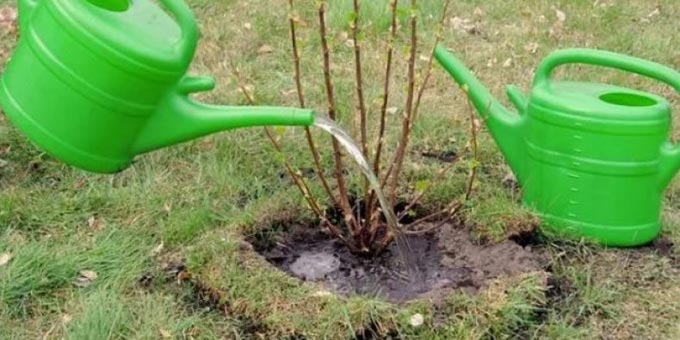

Bird droppings
This is a very concentrated fertilizer, so before use, the droppings are diluted 12 times with water. The expense for a currant bush is the same: a bucket for an adult plant and half a bucket for a young one.
Urea
Urea contains many nitrogenous compounds, therefore it is an excellent nutrient substrate for currants. Dry urea is scattered around the bushes and lightly covered with earth. For young plants, you need to take 50 g per bush, for mature plants, 25 g is enough.
You can add urea in liquid form. For this, a tablespoon of dry matter is stirred in a bucket of water. One plant takes a whole bucket of urea liquid solution. Fertilizer is best poured into the grooves around the bushes and sprinkled with earth. You can also sprinkle it on top with ash - 1 glass per plant.
Siderata
Greenery or green manure quickly grows green mass and develops a powerful root system. It is one of the most effective natural fertilizers.
Siderata perform several functions:
- Improves soil structure. Once mowed and embedded in the ground, their roots and stems become organic fertilizer.
- Suppresses the growth of weeds.
- They bind atmospheric nitrogen, converting it into nitrogen fertilizer. Alfalfa, peas and legumes have this ability.
- Prevents the spread of bacterial and fungal diseases (mustard, oats).
With regard to currants, the effect of them is lower than when using organic and mineral fertilizers. But on barren and depleted lands, the result from the use of green manure is not bad.
Green manure plants are used in different ways:
- dug up in the fall along with greens;
- the grass is mowed, crushed, mixed with wood ash and brought under the bush;
- cut off the top and use as mulch.
| Application time | Type of plant | Rules and dosage |
| In the beginning of May | Lupine | 20-30g / sq.m. Mowed 6-8 weeks after planting. They are embedded in the soil to a depth of 5-6 cm. |
| From spring to autumn, every 1.5-2 months | Mustard | 3-4 g / sq.m. The last sowing is in September. |
| After the snow melts | Phacelia | 1.5-2 g / m2 The green mass for embedding is cut off 45-50 days after sowing. |
All green manure must be mowed before seed formation, so that they do not turn into weeds.
Summer feeding
In the summer, there is an active ovary of berries, so the currants must be strengthened with ash fertilizers.
Dose of wood ash:
- black currant - 150 gr;
- colored currants - 200 gr.
Before applying the ash, the soil around the bushes is loosened, and then watered abundantly. Some gardeners make grooves in which ash is poured. Then the grooves are covered with earth, after which the bush is watered.
Also, in the summer, feeding from humus and compost goes well. These substrates can be used throughout the summer season as fertilizer and mulch.
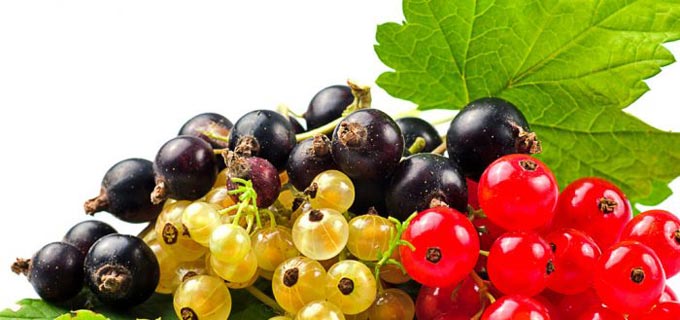

Mullein is an ideal top dressing for black currants. One liter of mullein is diluted in a bucket of water and watered on a 2 square meter planting area. It is better to pour the mullein into the grooves around the bushes, and after absorbing the liquid, sprinkle it with earth.
Fertilizing currants with a mullein increases the size of the berries.
In the summer, you can arrange additional food for the currants with the help of bread. Dried crusts are diluted with water (1: 1) and kept for 10 days. Then the infusion is diluted with water (1:10) and filtered. The bushes are poured with liquid. Colored currants are especially fond of such feeding, black does not react in any way to bread water.
Banana peels are also used by gardeners as food for currants. To do this, the peel of five bananas is insisted in a bucket of water for two days, and then watered with the plant's infusion. Sometimes the peel is simply crushed and added dropwise near the roots. The same is done with potato peelings.
For spraying plants, a nutrient mixture is used, consisting of:
- urea - 20 g;
- potassium permanganate - 3 g;
- boric acid - 5 g;
- copper sulfate - 20 g.
Urea is diluted in a bucket of water, the rest of the ingredients are mixed separately. Then all the substances are combined and the green mass is treated with a spray bottle.
Summer processing
Honeysuckle planting and care in the open field
Some people believe that summer is the best time to cultivate trees. But in our case we are talking about those "garden dwellers" who are from 3 years old or more. The same people claim that shaping in the summer months allegedly leads to the active growth of new shoots.
How true this statement is is difficult to say. After all, there are many nuances in each case. As an experiment, you can try to prune a tree in the summer and see the result. And draw conclusions based on this.
At the same time, it was noticed that if pruning is carried out at the time of pouring the fruits, their quality increases markedly.
Another plus of summer pruning is the sap secreted by the tree. It covers the wound, and this leads to early healing.
Nevertheless, the vast majority of experienced gardeners advise pruning when the tree is resting. Therefore, they most often give their preference to early spring.
Top dressing of currants in the fall
After picking berries, the bushes also need additional nutrition in order to restore the expended strength. Immediately after the harvest, new buds begin to form, so this time should not be missed. You will need phosphate-potassium fertilizers. In autumn, it is advisable to use liquid solutions of mineral fertilizers. One bush will take from 5 g to 10 g of superphosphate or potassium sulfate dissolved in water.
Compost is also used for feeding in the fall.To do this, take for each plant 5 kg of compost mixed with potassium sulfate (1 st / l) and superphosphate (2 st / l). Black currant prefers such top dressing in the fall.
Before preparing for winter, you can add about 300 grams of ash under each shrub. This will be enough. But it is better to dissolve the ash in water beforehand. To do this, fill the bucket with ash to half and fill it with water. The infusion should stand for 48 hours. Then the concentrate is diluted again with water: 1 liter of infusion per bucket. A bucket of ash fertilizer is consumed per bush, half a bucket is enough for young bushes.


Harvesting the harvest
Caring for creeping juniper in the fall


The beauty's red berries (unlike blackcurrant varieties) are able not to fall off for a long time, they firmly hold on to their twig up to 1.5-2 months after ripening.
But prolonged wet rainy weather can lead to cracking of the fruits and deterioration of their presentation. Therefore, it is better to immediately harvest the scarlet harvest of vitamins.
Collect red currant fruits only after the shrub is fully ripe! The premature collection of unripe berries inhibits the development of fresh fruits, which leads to a decrease in yield.
Experienced gardeners harvest red currants in two passes: the main one, when most of the fruits ripen, and an additional one, to pick up the berries that have ripened later.
Collection container. It is best to use small containers (buckets, baskets, sieves or boxes with a capacity of 3-4 kg), otherwise the berries may crumple under their weight.
Some experienced gardeners for these purposes independently make special trays from wooden slats (the bottom is made of tarpaulin or plywood).
When to collect. Harvesting should be done on cooler days, preferably in dry weather. The harvest of berries harvested after the rain is stored worse.
It is best to start picking berries in the morning (after the dew has dried).
Preparing for winter
Currant is a winter-hardy plant and tolerates frosts down to -25C. However, the bushes must be carefully prepared for the winter cold. To do this, carry out the following actions:
- cut off old branches;
- cultivate the soil;
- apply mineral fertilizers;
- bend the twigs to the ground.
After the leaves fall off, the bushes are pruned. Remove all old, diseased and dried branches, as well as too weak young shoots. Thin young twigs will not be able to withstand severe frosts, so it is better to prune them.
Preparation of the soil begins with cleansing of fallen leaves and old mulch. Then the land around the bushes is sanitized with a solution of copper sulfate, Bordeaux liquid or potassium permanganate.
Before the leaves fall off, the bushes are treated with a solution of urea (1:10). This will protect the currants from fungal infections and harmful microorganisms.
Before the very frosts, they dig up the soil: you will get rid of the settlement of pests that have settled down for the winter. They dig up the ground with a pitchfork, trying to break up large lumps. Before digging (or simultaneously with it), it is necessary to feed the currants for the winter - potassium sulfate and phosphorus. Mineral preparations can be replaced with wood ash. If the ash is clumped, it must be sieved.
After that, the soil around the plants is covered with a layer of mulch, which will protect the roots of the currant from the winter cold and retain the necessary moisture inside. Mulching is carried out before the onset of frost, otherwise you will get the effect of a refrigerator.
To protect the bushes from severe frosts, you can use agrofibre, fallen leaves or needles. During a snowfall, you need to crush the snow around the currants - this will serve as additional protection. Also, snow is thrown over the bushes from above. Shrubs are not covered with synthetic material, as it blocks the access of oxygen to the branches.
After the onset of stable frosts, fresh manure can be spread around the currants - this will serve as an additional shelter for the root system from the cold.
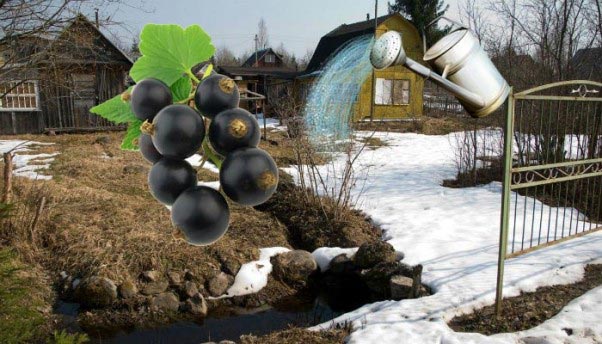

Optimal timing
There are two types of fertilizers: organic and mineral. They differ in the nature of the impact. What they have in common are the nutrients supplied to the plants. The main ones are nitrogen, phosphorus and potassium.
Depending on the type, the timing of fertilization in the fall is distinguished:
- The first portion is brought in immediately after the end of fruiting (late August-early September).
- The next one is in October-November, a month before the constant frosts.
- The third - at the onset of subzero temperatures (for the middle zone, this is the end of November-mid-December). This top dressing is applied even in the snow.
The main commandment of the gardener is that after mid-July I do not feed the bushes with nitrogen - for currants it must be strictly followed!
Nitrogen causes the development of young shoots, but they do not have time to ripen by winter and will die in frost. But a small percentage of this substance is still required by the plant for proper development. That is why organics are used in late autumn.
Dry fertilizers are applied in the fall when digging a trunk circle. To reduce the risk of root burns, you need to indent from the base of the bush a (dig a gutter around a circle up to 30 cm deep).
Currant care rules
The plant is very sensitive to chlorine, so preparations containing it should be avoided. Instead of potassium, you need to use potassium sulfate.
Nitrogen fertilizers are very important for feeding currants in the spring, when the plant is gaining green mass. In summer, nitrogen will interfere with the formation of berries, so it is not added to the top dressing.
In autumn, nitrogenous compounds also bring harm instead of benefit, since they block the ripening of branches. This is bad for the preparation of the plant for winter - the twigs can freeze.
Nitrogen fertilizers are best used in the form of irrigation, as they are poorly absorbed by the green mass. So that the feeding does not burn the roots of the plants, the bushes are preliminarily watered with plain water.
Currants can get root burns if dry bird droppings are spread around the bushes. It is a very concentrated substrate that must be diluted with water.
In order for cow dung to well nourish the roots with microelements, it is dropped into the ground around the bushes to a depth of 25 cm. Only the rotted mass is used, and it is laid out at a distance of a meter from the trunk.
Moisture charging irrigation
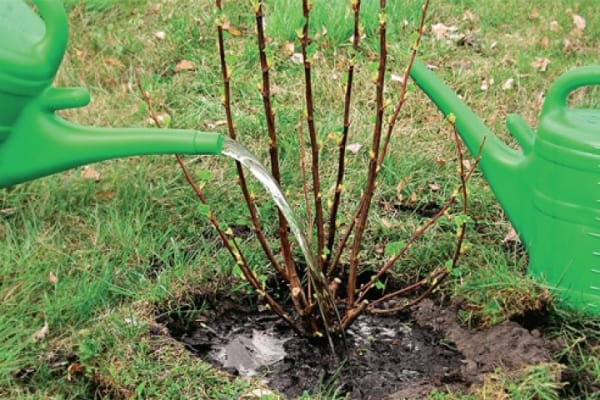

Black currant in the fall. Moisture charging irrigation
Black currant is moisture-loving. Sufficient soil moisture is important not only during the season of active growth and fruiting, but also when the plant goes into a state of winter dormancy. Why is moisture at this time?
- If the aboveground part is already ready for winter, then the suction roots are still actively growing. This is not possible in dry soil.
- Moistened soil cools down much more slowly, retaining heat longer, freezing gradually. It thaws just as slowly, preventing the plant from waking up during a long thaw in winter.
- Sufficient soil moisture will save the bushes from winter desiccation.
Therefore, water-charging irrigation is simply necessary, especially if autumn does not indulge in rains. It is carried out with the beginning of leaf fall. Watering rates for a bush under the age of 5 years - about 4 buckets, if it is older - almost twice as much. Water carefully, trying not to erode the soil. Most of all, currants growing on sands and sandy loams need water-charging irrigation. If the soil is clayey, the water rates are reduced. Correct them if sometimes it rains and is not spent at all in a very wet autumn.

